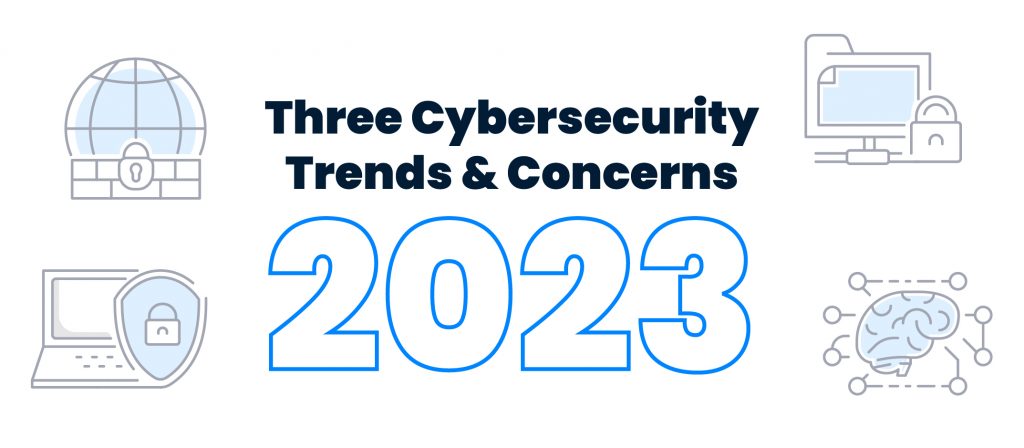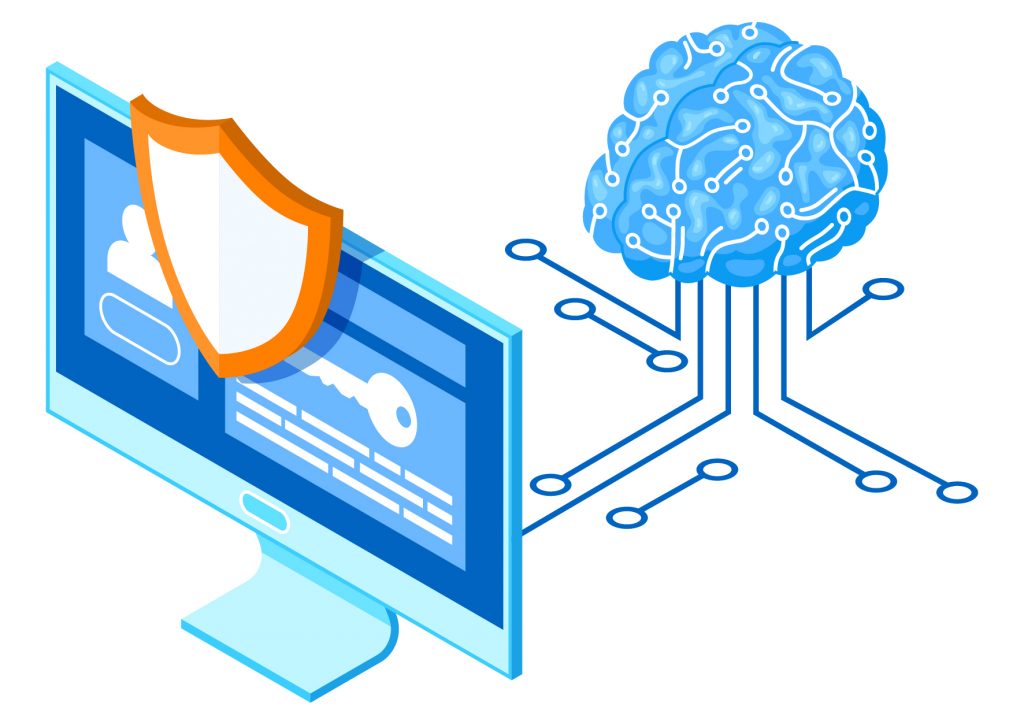The top three cybersecurity trends and concerns for 2023 gravitate around privacy and data security as issues of growing importance. While the public and private sectors continue to take increased actions to prevent and limit the effects of cybercrimes, they must stay grounded on the present and future cybersecurity realities.
At the beginning of 2023, organizations are still working with tools and technologies on their older, perpetual challenges, such as convincing C-level executives of the importance of robust security strategies. However, as cyber criminality is on the rise, it’s high time enterprises pay more attention to cybersecurity and take efficient steps in achieving their security goals.
The importance of Cybersecurity in 2023
In 2022, while businesses across different industries have sped up the adoption of cybersecurity measures, according to Statista, “during the third quarter of 2022, approximately 15 million data records were exposed worldwide through data breaches. This figure had increased by 37 percent compared to the previous quarter”.
Numerous tools and technologies are available to improve cybersecurity, from firewalls, anti-virus software, and intrusion detection and prevention systems to encryption and multi-factor authentication (MFA). And, although spending money on security solutions is unavoidable, it’s always better if organizations follow a budget supporting a strategic security roadmap.
A responsible approach to cybersecurity also comes with an understanding of the fundamental connection between the data protection regulations made by lawmakers worldwide and how companies react and enact those laws. To prepare for any uncertainty and ensure the efficacy of laws, enterprises must continue to find the right balance of collaboration with governments.

Top three Cybersecurity trends and concerns for 2023
Several recent events have shaped the state of cybersecurity worldwide. The Covid-19 pandemic’s legacy and the effects of the ongoing war in Ukraine took a toll on global politics, the economy, and cyberspace.
In recent years we have seen an unprecedented number of ransomware attacks, a rising phenomenon expected to cost the world a whopping $265 billion in 2031. “In 2022, 71 percent of companies worldwide were affected by ransomware. According to a survey of global IT professionals, around 72 percent of the respondents paid the ransom and recovered the compromised data,” according to Statista.
Other cyber threats such as malware, insider threats, spam, and phishing are also on the rise, especially with people adopting work-from-home and BYOD practices and enterprises’ attack surfaces continually expanding.
“Cybersecurity Ventures expects global cybercrime costs to grow by 15 percent per year over the next five years, reaching $10.5 trillion USD annually by 2025, up from $3 trillion USD in 2015. ”
Source
1. Zero Trust: continuously authenticate the hybrid workforce to achieve endpoint security
As more people continue to work remotely, securing the hybrid workforce is something many enterprises are learning to manage. Indeed, having a hybrid workforce sustains a more flexible and efficient work environment and work-life balance while reducing overhead costs. But how can you ensure that corporate data is safely accessed only by authorized users when employees and devices are out-of-sight?
At the office, it used to be much easier to monitor the identity of your workforce, for example, using ID cards, CCTV, security personnel, and login credentials for all corporate devices and every employee.
However, these solutions are no longer relevant in monitoring remote employees’ identities. Modern security solutions such as continuous endpoint authentication (CEA) come into play as fundamental to achieving Zero Trust because they are causing the paradigm shift from “trust but verify” to “never trust, always verify.”

Continuous endpoint authentication allows enterprises to monitor all users accessing company endpoints at all times, not just when they log in to a computer with their username and password. By continuously authenticating users when they type, TypingDNA ActiveLock uses typing biometrics technology to keep unauthorized users out and enforce Zero Trust.
As the US Department of Defense has published its latest Zero Trust Strategy in late 2022, more enterprises will embrace Zero Trust, not only as a way to keep up with the ever-evolving cyberspace but also to align with the DoD’s 2027 deadline when a full zero trust deployment for the department and its vendors is expected.
2. BYOD: Achieve device security with continuous endpoint authentication

In the past, employees would only utilize equipment that the company provided, which made it easy for businesses to secure those devices and implement security policies to be closely followed by employees.
In recent years, remote work skyrocketed, and Bring Your Own Device (BYOD) has developed into a convenient trend for employees and companies. BYOD provides workers more freedom to handle calls and business-related matters from anywhere, while for organizations, BYOD results in more productivity and lower costs.
67% of respondents said BYOD has actually decreased organizations’ security posture.
Source
Setting clear policies and security training for employees is not enough to ensure BYOD security, especially with a remote workforce.
To secure mobile BYOD devices, enterprises usually find themselves bound to deploying Mobile Application Management (MAM) or Mobile Device Management (MDM) solutions, which can feel intrusive for employees.
3. AI & Machine learning to enhance cybersecurity and protect growing attack surfaces

By 2023, there will be 3X more networked devices on Earth than humans. With so many gadgets connected to networks, as the Internet of Things expands, it becomes a high-priority issue for enterprises to secure their attack surfaces.
All entry points of a network represent the attack surface. Devices, communication channels, applications, and software are all ways in which an attack can begin to harm the entire cyber system.
To manage the attack surface, cybersecurity teams can split the area into categories that they use to handle threats and prevent breaches, pinning down on-premise and cloud-based spots that can be breached, prioritizing high-risk areas, and monitoring the surface for new vulnerabilities.
But, having an ever-growing number of entry points makes it very challenging for IT teams to protect and secure the network from threats unless some automatization is deployed. To help out IT teams and protect data, AI and machine learning (ML) are key technologies that supply analysis of millions of events and identification of threats in real-time.
AI and ML can effectively monitor and flag risky behavior, reduce human error, increase cybersecurity, improve threat response and identification, forecast outcomes, and model behavior to create user profiles for workforce security. ActiveLock continuous endpoint authentication is a technology that deploys AI and ML to monitor user behavior when they type on their keyboards, protecting devices from unauthorized users.

